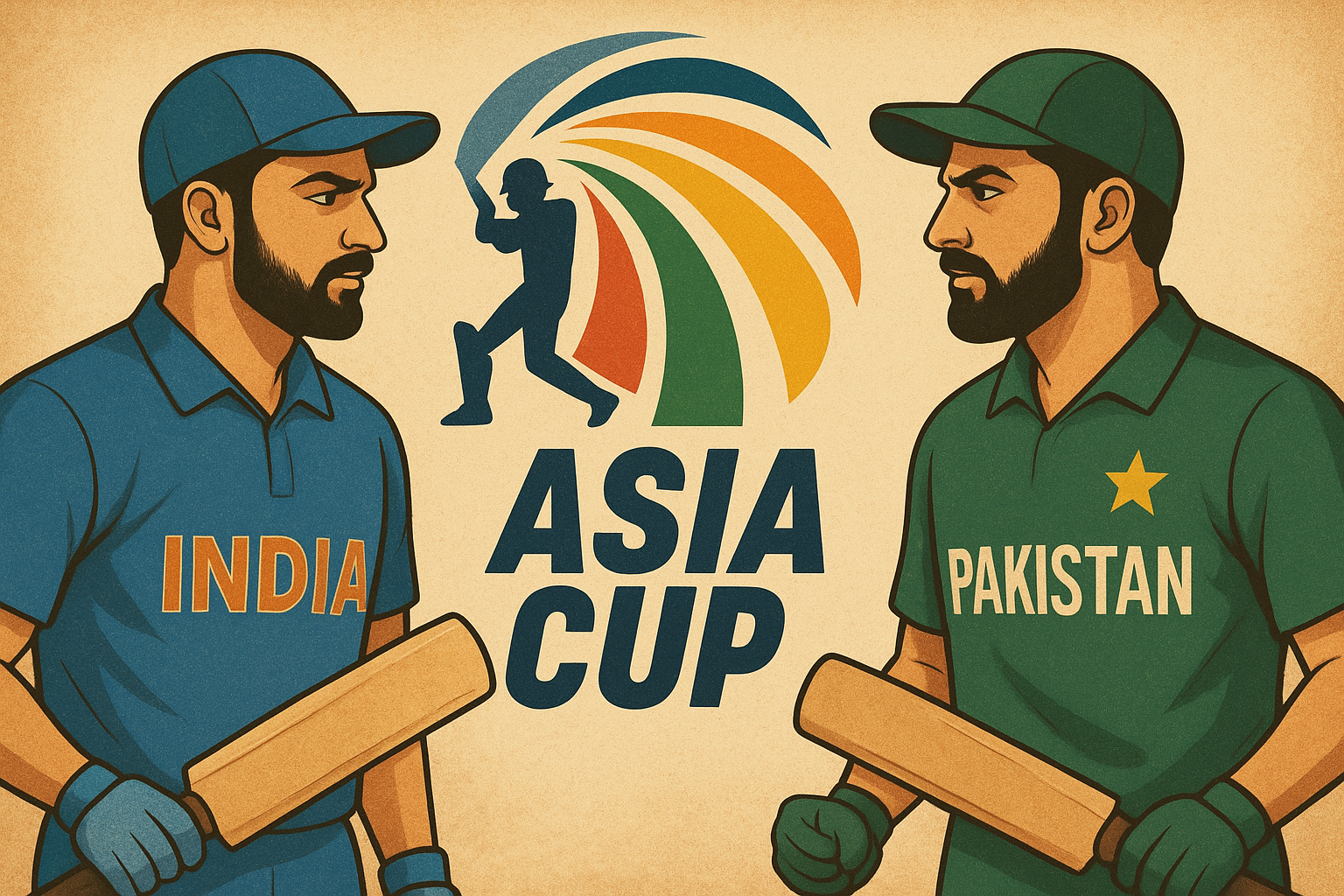Cricket between India and Pakistan has always been more than just a game. It’s a spectacle that captures the attention of millions, often transcending the boundaries of sport to touch on politics, history, and national pride. This year, the so-called Asia Cup is beginning to feel less like a continental tournament and more like a carefully packaged bilateral series between the two arch-rivals — India and Pakistan.
The Context: A Tournament Shaped by Politics
Traditionally, the Asia Cup has been a platform for Asian cricketing nations like Sri Lanka, Bangladesh, Afghanistan, and others to compete at the highest level. However, the recent geopolitical climate has shifted its structure dramatically.
Earlier this year, tensions escalated between India and Pakistan following the brief border conflict in May 2025. Amid strained diplomatic ties, the idea of hosting a proper bilateral cricket series was politically impossible. Yet, cricket boards on both sides — under the influence of the Asian Cricket Council (ACC) — have cleverly maneuvered to create a setup where India and Pakistan play multiple high-profile matches, while still maintaining a veil of multilateral competition.
In essence, the Asia Cup has been restructured into a politically safe format where India and Pakistan can clash on neutral grounds without officially calling it a bilateral series.
Why It Feels Like a Bilateral Series
- Multiple India-Pakistan Clashes
The tournament schedule is oddly designed to guarantee at least three India-Pakistan matches, This level of repetition is unusual for a multi-nation tournament and mirrors the structure of a bilateral series, where teams play a set number of matches. - Other Teams Are Mere Participants
While Sri Lanka, Bangladesh, and Afghanistan are part of the tournament, their role seems secondary. Fixtures involving these teams are spread out and receive limited media attention, whereas India-Pakistan games are given prime slots, massive marketing campaigns, and ticketing priority. - Revenue-Driven Motive
Broadcasters and sponsors are driving the narrative. India-Pakistan matches are cricket’s most lucrative encounters, often drawing hundreds of millions of viewers worldwide. The Asia Cup branding provides a legitimate cover, but financially, it resembles a bilateral series crafted purely for commercial gains. - Venue Selection and Logistics
The entire tournament is being played in neutral venues, which aligns with how India-Pakistan bilateral series were organized in the early 2000s in places like Sharjah. This avoids the diplomatic headaches of hosting games in either country.
The Disguise: Maintaining Diplomatic Optics
From a political perspective, neither government wants to be seen as actively promoting a bilateral cricket series in the wake of recent conflicts.
- For India: Engaging directly with Pakistan in a series could be perceived domestically as a softening of stance, which the government wants to avoid.
- For Pakistan: Cricket is a major source of soft power, and framing these games as part of a larger continental tournament gives them diplomatic legitimacy.
The Asia Cup branding offers both countries a convenient shield. They can claim to be participating in a neutral, ACC-sanctioned event rather than a direct series.
Impact on the Game and Fans
While the political maneuvering might be clever, it has sparked mixed reactions among fans and analysts:
- Excitement Among Fans: For cricket lovers, especially in India and Pakistan, more matches mean more drama, rivalries, and unforgettable moments.
- Frustration Among Other Nations: Smaller Asian cricket boards feel sidelined, as their matches are treated like warm-up games with minimal coverage.
- Dilution of Tournament Spirit: The Asia Cup was designed to foster cricketing growth across Asia. Turning it into a disguised bilateral series undermines that original purpose.
Looking Ahead: The Road Beyond the Asia Cup
If this format proves financially successful, it could set a precedent for future tournaments. The ACC and ICC might lean toward similar structures, blurring the line between true multi-nation tournaments and commercialized bilateral spectacles.
However, the long-term implications could be damaging.
- Cricket risks becoming overly commercial and politically manipulated.
- Emerging teams like Afghanistan and Nepal might struggle for meaningful exposure.
- Fans may grow cynical about the authenticity of tournaments.
Conclusion: A Game Played on Two Fronts
The ongoing Asia Cup is more than a sporting contest — it’s a carefully crafted diplomatic balancing act. On the surface, it’s about cricket, camaraderie, and continental pride. Beneath that surface, however, it’s essentially a bilateral series between India and Pakistan, disguised for political convenience and commercial gain.
As the tournament unfolds, fans will undoubtedly enjoy the high-octane clashes. But it’s worth remembering that in cricket, as in politics, appearances can be deceiving. Sometimes, what looks like a celebration of unity might just be a well-marketed illusion.

Leave a Reply to abhishek t s Cancel reply